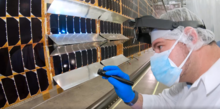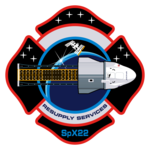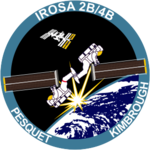
STS-92 was a Space Shuttle mission to the International Space Station (ISS) flown by Space Shuttle Discovery. STS-92 marked the 100th mission of the Space Shuttle. It was launched from Kennedy Space Center, Florida, 11 October 2000.
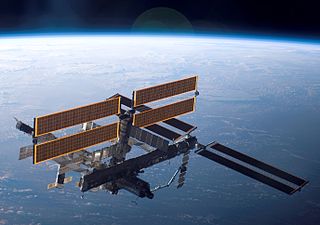
STS-115 was a Space Shuttle mission to the International Space Station (ISS) flown by Space ShuttleAtlantis. It was the first assembly mission to the ISS after the Columbia disaster, following the two successful Return to Flight missions, STS-114 and STS-121. STS-115 launched from LC-39B at the Kennedy Space Center on September 9, 2006, at 11:14:55 EDT.

Pavel Vladimirovich Vinogradov is a former cosmonaut and commander of the International Space Station. As of January 2023, he has flown into space three times, aboard Mir and the International Space Station, and was one of the top 10 astronauts in terms of total time in space after his third spaceflight. Vinogradov has also conducted seven spacewalks in his cosmonaut career, and holds the record for the oldest person to perform a spacewalk.

Robert Shane Kimbrough is a retired United States Army officer and NASA astronaut. He was part of the first group of candidates selected for NASA astronaut training following the Space Shuttle Columbia disaster. Kimbrough is a veteran of three spaceflights, the first being a Space Shuttle flight, and the second being a six-month mission to the ISS on board a Russian Soyuz craft. He was the commander of the International Space Station for Expedition 50, and returned to Earth in April 2017. He is married to the former Robbie Lynn Nickels.

STS-116 was a Space Shuttle mission to the International Space Station (ISS) flown by Space Shuttle Discovery. Discovery lifted off on December 9, 2006, at 20:47:35 EST. A previous launch attempt on December 7 had been canceled due to cloud cover. It was the first night launch of a Space Shuttle since STS-113 in November 2002.

STS-117 was a Space Shuttle mission flown by Space Shuttle Atlantis, launched from pad 39A of the Kennedy Space Center on June 8, 2007. Atlantis lifted off from the launch pad at 19:38 EDT. Damage from a hail storm on February 26, 2007, had previously caused the launch to be postponed from an originally-planned launch date of March 15, 2007. The launch of STS-117 marked the 250th orbital human spaceflight.

STS-119 was a Space Shuttle mission to the International Space Station (ISS) which was flown by Space Shuttle Discovery during March 2009. It delivered and assembled the fourth starboard Integrated Truss Segment (S6), and the fourth set of solar arrays and batteries to the station. The launch took place on March 15, 2009, at 19:43 EDT. Discovery successfully landed on March 28, 2009, at 15:13 pm EDT.
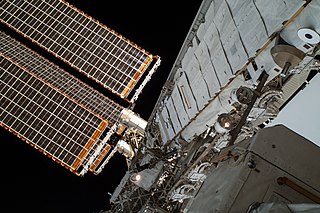
The Integrated Truss Structure (ITS) of the International Space Station (ISS) consists of a linear arranged sequence of connected trusses on which various unpressurized components are mounted such as logistics carriers, radiators, solar arrays, and other equipment. It supplies the ISS with a bus architecture. It is approximately 110 meters long and is made from aluminium and stainless steel.

The electrical system of the International Space Station is a critical resource for the International Space Station (ISS) because it allows the crew to live comfortably, to safely operate the station, and to perform scientific experiments. The ISS electrical system uses solar cells to directly convert sunlight to electricity. Large numbers of cells are assembled in arrays to produce high power levels. This method of harnessing solar power is called photovoltaics.

Richard Robert "Ricky" Arnold II is an American educator and a NASA astronaut. He flew on Space Shuttle mission STS-119, which launched March 15, 2009, and delivered the final set of solar arrays to the International Space Station. He launched again in 2018 to the ISS, onboard Soyuz MS-08.

The process of assembling the International Space Station (ISS) has been under way since the 1990s. Zarya, the first ISS module, was launched by a Proton rocket on 20 November 1998. The STS-88 Space Shuttle mission followed two weeks after Zarya was launched, bringing Unity, the first of three node modules, and connecting it to Zarya. This bare 2-module core of the ISS remained uncrewed for the next one and a half years, until in July 2000 the Russian module Zvezda was launched by a Proton rocket, allowing a maximum crew of three astronauts or cosmonauts to be on the ISS permanently.

Thomas Gautier Pesquet is a French aerospace engineer, pilot, European Space Agency astronaut and actor. Pesquet was selected by ESA as a candidate in May 2009, and he successfully completed his basic training in November 2010. From November 2016 to June 2017, Pesquet was part of Expedition 50 and Expedition 51 as a flight engineer. Pesquet returned to space in April 2021 on board the SpaceX Crew Dragon for a second six-month stay on the ISS.

Since construction started, the International Space Station programme has had to deal with several maintenance issues, unexpected problems and failures. These incidents have affected the assembly timeline, led to periods of reduced capabilities of the station and in some cases could have forced the crew to abandon the space station for safety reasons, had these problems not been resolved.

Expedition 63 was the 63rd long duration mission to the International Space Station, which began on 17 April 2020 with the undocking of the Soyuz MS-15 spacecraft and continued until the undocking of the Soyuz MS-16 spacecraft on 21 October 2020, an unusual double-length expedition increment. The Expedition initially consisted of American commander Chris Cassidy, as well as Russian flight engineers Anatoli Ivanishin and Ivan Vagner. On 31 May 2020, the Expedition welcomed the crew of Crew Dragon Demo-2, the first crewed flight of SpaceX's Crew Dragon spacecraft, named Endeavour after the eponymous Space Shuttle vehicle. The mission's two crew members Doug Hurley and Bob Behnken undocked from the International Space Station on 1 August 2020 to help bolster research on the station and participate in several spacewalks outside of the station.

Expedition 65 was the 65th long duration expedition to the International Space Station. The mission began on 17 April 2021, with the departure of Soyuz MS-17, and was initially commanded by NASA astronaut Shannon Walker serving as the third female ISS commander, who launched in November 2020 aboard SpaceX Crew-1 alongside NASA astronauts Michael S. Hopkins and Victor J. Glover, as well as JAXA astronaut Soichi Noguchi. They were joined by the crew of Soyuz MS-18, which is made up of Russian cosmonauts Oleg Novitsky and Pyotr Dubrov, as well as NASA astronaut Mark Vande Hei.
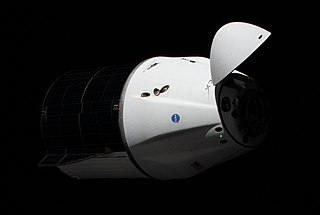
SpaceX CRS-22, also known as SpX-22, was a Commercial Resupply Services (CRS) mission to the International Space Station (ISS) that launched at 17:29:15 UTC on 3 June 2021. The mission is contracted by NASA and is flown by SpaceX using a Cargo Dragon 2. This is the second flight for SpaceX under NASA's CRS Phase 2 contract awarded in January 2016.

Expedition 64 was the 64th long-duration expedition to the International Space Station (ISS), that began on 21 October 2020 with the undocking and departure of Soyuz MS-16. The Expedition started with the three crew members launched onboard Soyuz MS-17 and reached its full complement with the arrival of SpaceX Crew-1, the first operational flight of NASA's Commercial Crew Program (CCP). As Crew-1 consists of a crew of four instead of three like the Soyuz, Expedition 64 marks the beginning of operations for crews of seven on the ISS. In the final week of the mission, Soyuz MS-18 and its three person crew joined the mission. The expedition ended on 17 April 2021 with the departure of Soyuz MS-17.

SpaceX CRS-28, also known as SpX-28, is a Commercial Resupply Service mission to the International Space Station (ISS) launched on 5 June 2023. The mission was contracted by NASA and flown by SpaceX using Cargo Dragon C208. It was the eighth flight for SpaceX under NASA's CRS Phase 2.







